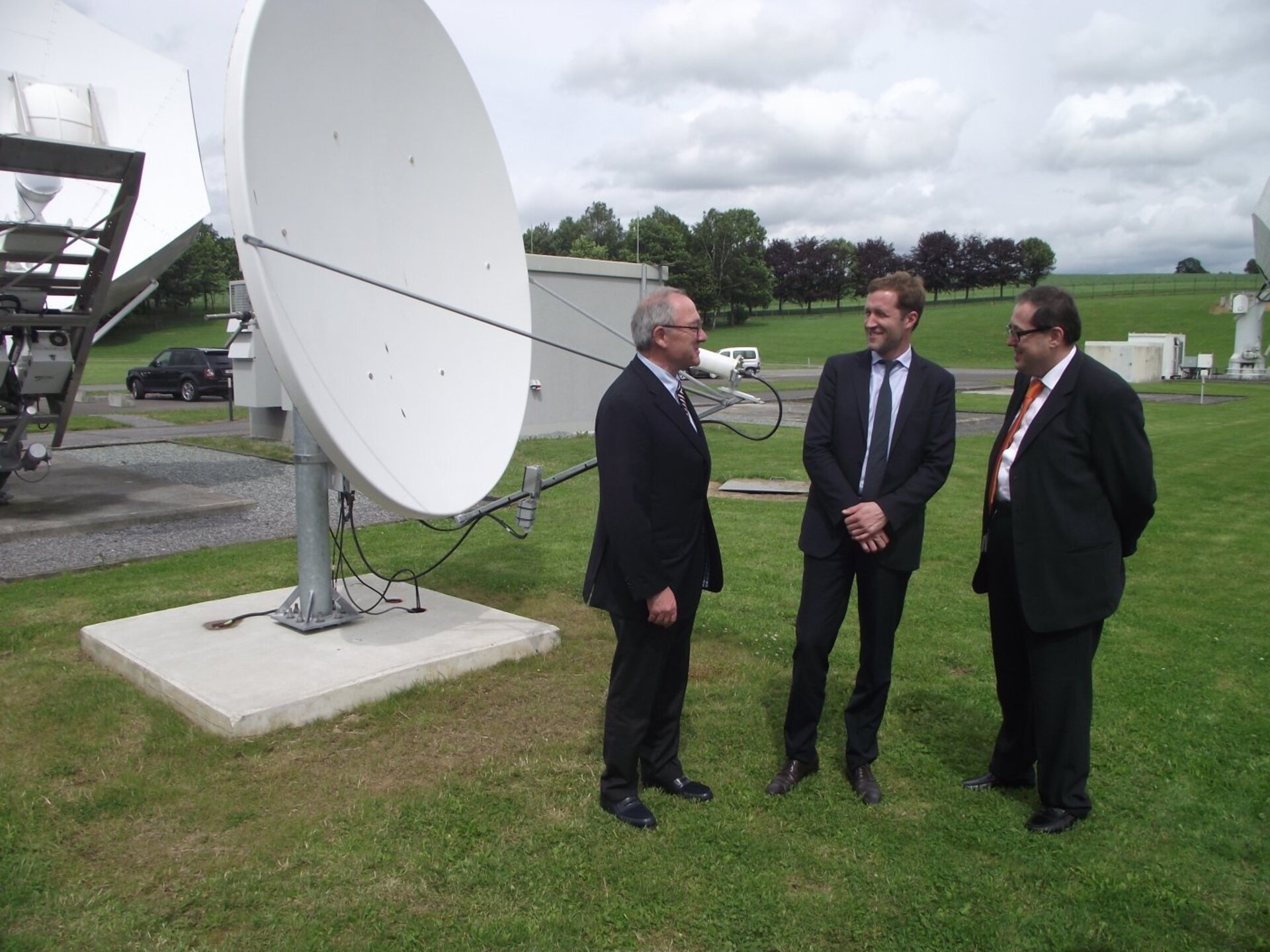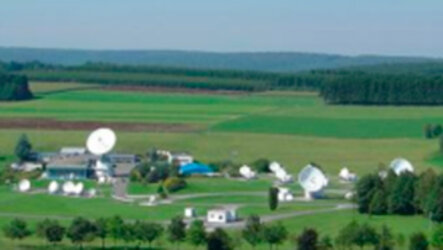Belgium's science minister tours ESA Redu
At the invitation of ESA’s Director General, Belgium’s Minister responsible for science policy, Paul Magnette, visited the ESA Redu Centre in Belgium on 11 July.
The minister, impressed by the variety of space missions carried out from this corner of the Ardennes, confirmed investments of some €4 million to consolidate the role of ‘Redu-on-space’ as an ESA centre of excellence.
“I want the expertise of Redu to be permanent and ensure the site is recognised as a ‘centre of excellence’ of ESA, especially for security programmes, telecommunications, in-orbit control demonstrations and space surveillance,” said Mr Magnette.
“With the investments made and experience gained over the years, Redu has become essential in the development of future space programmes of ESA and the EU.”
The centre has been tracking satellites since 1968 and now hosts 43 steerable antennas.
In-orbit testing facilities including antennas, measurement and processing chains for telecommunication satellites in the Ku- and Ka-bands.
ESA’s Director General, Jean-Jacques Dordain, outlined the missions served by the centre, including data relay through ESA’s Artemis, which supports human spaceflight and Earth observation missions.
Redu also plays a key role in the Proba missions, serving as the mission operation centre. The Proba satellites are among the smallest ever flown by ESA.
The added investments from the Belgian government and ESA have allowed the centre to expand to accommodate two of Europe’s biggest undertakings in space: Galileo and the European Data Relay System.
At the forefront of Galileo
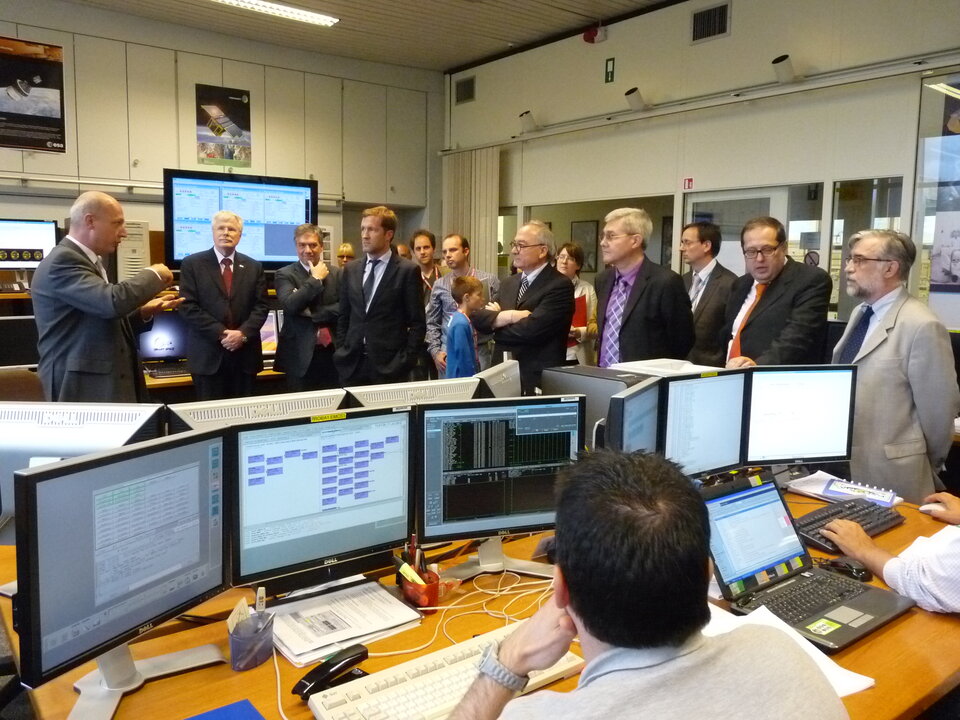
Redu plays a primary role in the in-orbit testing of every satellite in the Galileo navigation satellite constellation. It has a 20 m-diameter L-band antenna to receive navigation signals and a C-band transmit antenna to test the onboard mission receiver and to uplink navigation messages to the satellite.
A UHF antenna transmits simulated search and rescue signals to the satellites.
As the tests are performed, Redu is in constant communication with the Galileo Control Centre, from where the satellite platforms are being controlled.
Once the campaign is completed, oversight of the Galileo payloads will pass to Galileo’s second control centre, at Fucino in central Italy.
ESA Redu will provide strong security to serve as a reference station for Galileo’s Public Regulated Service (PRS), thanks to new investment.
The Galileo Sensor Station will be hosted in a secure building for testing a PRS receiver. ‘Redu-on-space’ will be crucial for validating the reliability of the encrypted service, intended for government agencies.
Key link in data collection
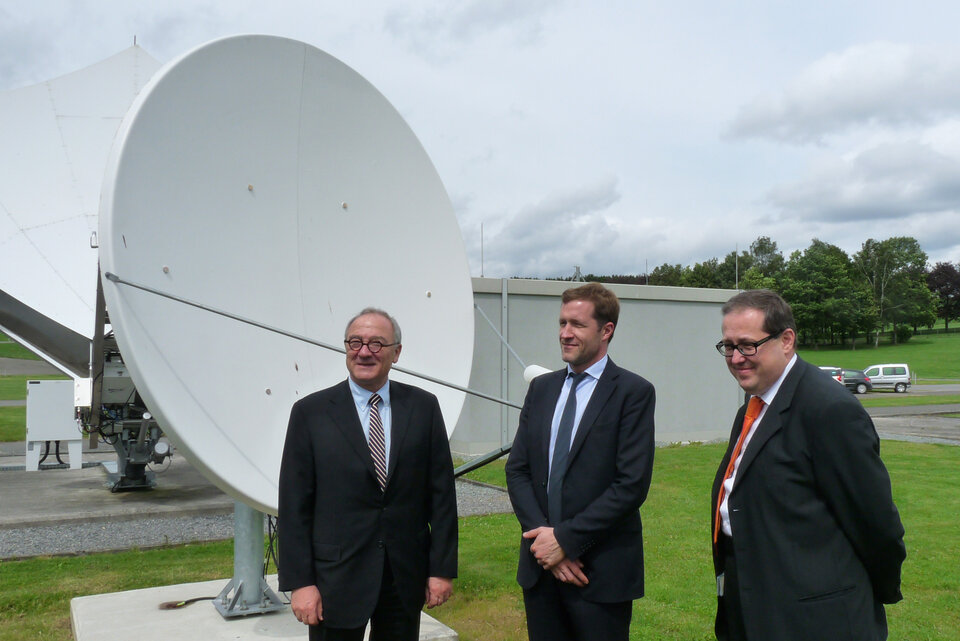
With the Artemis telecommunications satellite, the centre has positioned itself as a key link in the collection and relay of broadband data via geostationary orbit.
Redu will become one of the two centres operating Europe’s new satellite system that will speed up the relay of large quantities of data for monitoring our planet.
The European Data Relay System – EDRS – will provide a telecommunications network that is fast, reliable and seamless. It will make realtime information from satellites available on demand.
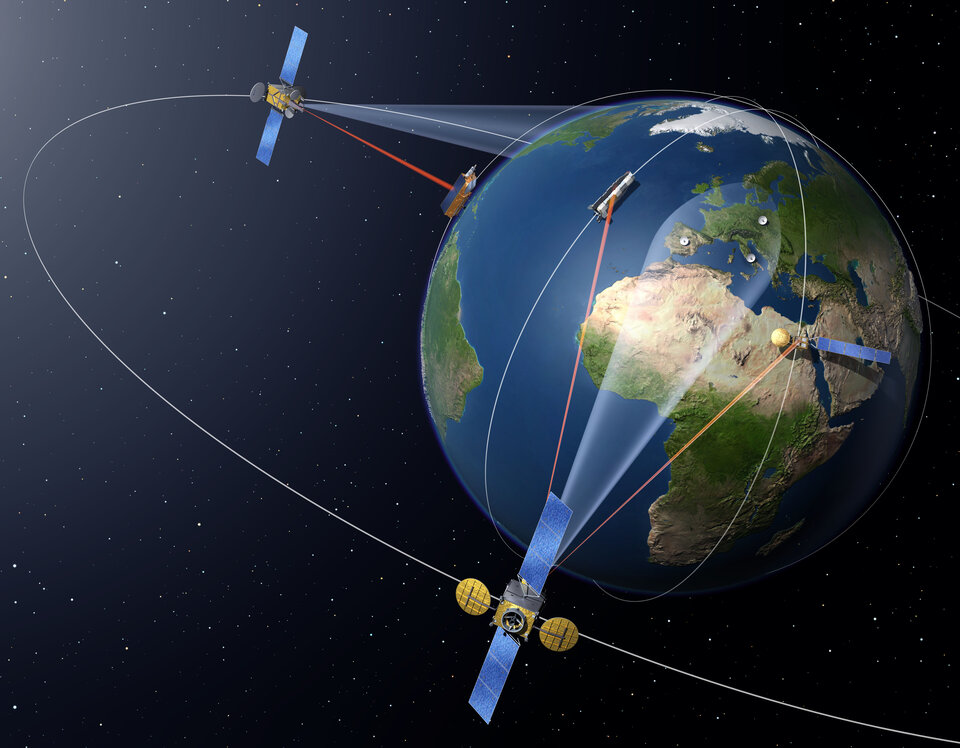
EDRS is being built through a public–private partnership between ESA and Astrium Services, with the first launch planned for late 2014.
The prime Mission Operations Centre will be at Astrium’s facilities in Ottobrunn, Germany, while the backup centre will be installed in Belgium.
Redu Space Services is now contracted to deliver both. EDRS will pour its huge quantities of data through new antennas at Redu.
Redu will also be used to check the satellite payloads before they are declared ready for use.
Added security

Thanks to its secluded location in the Belgian Ardennes, the centre is also involved with the security aspects of space activities. These include the Galileo PRS, the state of the space environment with the Space Situational Awareness database, and future strategic missions in cooperation with the European Defence Agency.
“The ESA Redu Centre is fortunate to be isolated. Past and future investments make it unique in terms of infrastructure and expertise for the safe treatment of protected information,” says Mr Dordain.


